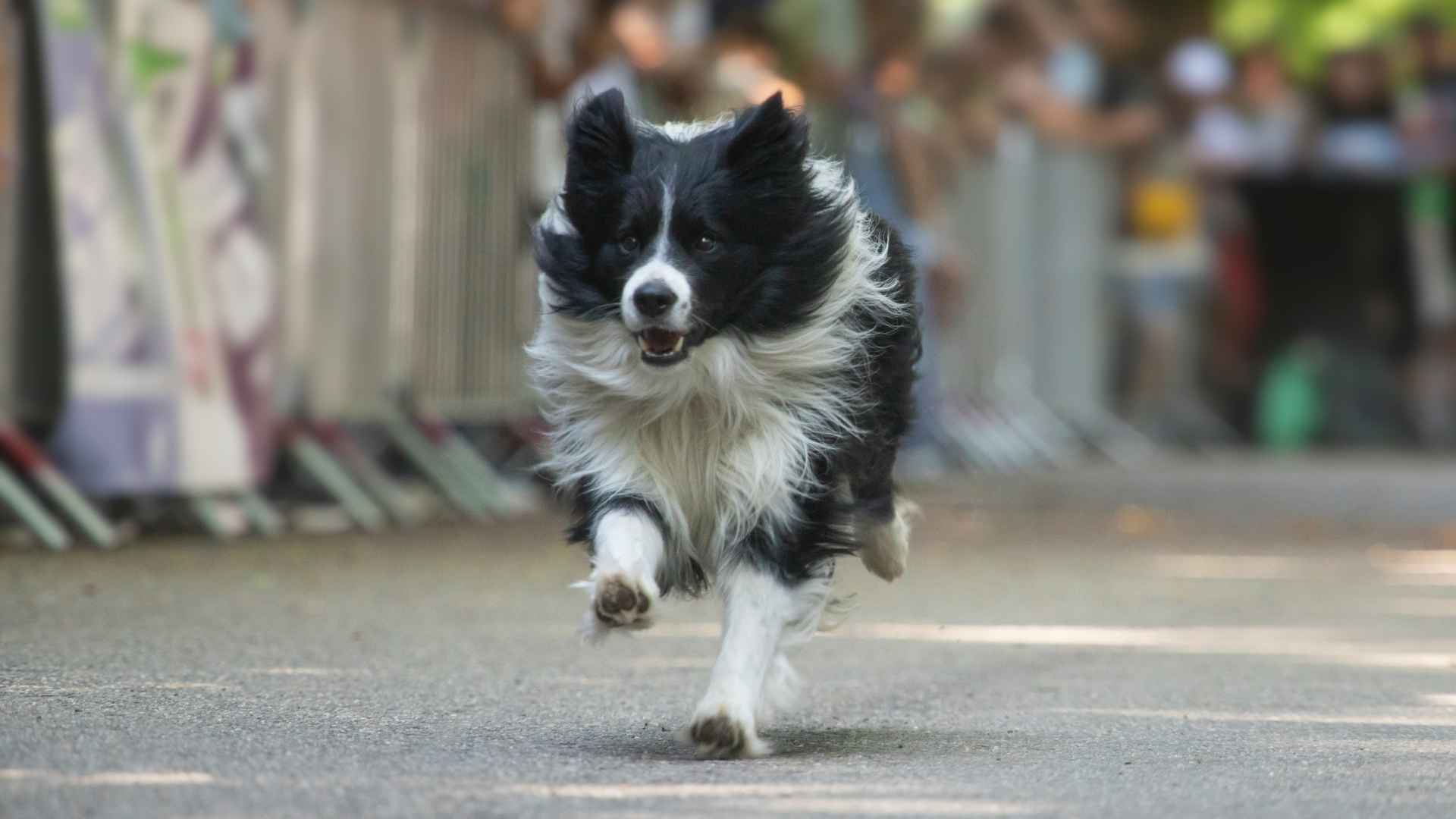Dogs are some of the planet’s top endurance athletes. According to Runner’s World, dog athletes can sustain metabolic rates of around 4,400 kJ per kg⁰·⁷⁵ per day—nearly three times higher than elite human cyclists during races. That means when we set out for a marathon, having a canine companion by your side isn’t just sentimental—it’s scientifically powerful.
Not every dog can go the distance. But certain breeds—whose ancestors were originally bred for stamina, herding, hunting, or pulling sleds—thrive on long-distance running. Dogs that cover long distances daily need regular exercise and mental stimulation; otherwise, their boundless energy turns into destructive habits.
So if you’re after a running buddy who can match your stride—not just in short spurts, but mile after mile—this is your starting line. This is just what endurance running with a dog is all about: pairing marathon-running enthusiasm with a canine companion built for distance, stamina, and partnership.
Marathon Running Dog Breeds
Here are 7 dog breeds for running:
1. Vizsla
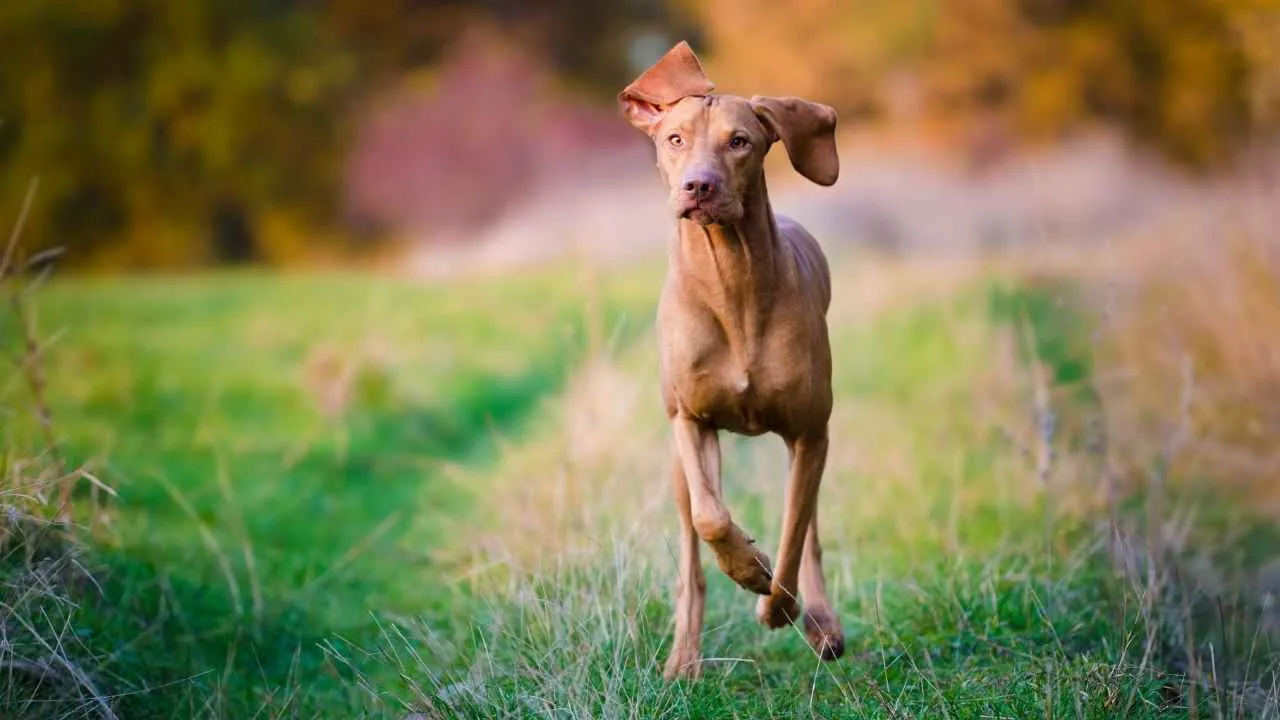
If you’re looking for a loyal, high-energy running buddy that thrives on vigorous exercise, the Vizsla stands out. As one of the best running dog breeds, this lean, medium-sized dog was originally bred by the Magyar tribes in Hungary. They’re natural athletes, combining speed, stamina, and a strong bond with their human.
Why Vizslas Are Great Running Companions
With their sleek, short coat, Vizslas handle warm temperatures better than many other medium-sized dogs.
This is an athletic breed with a long, quick gait—perfect for distance running or even a half-marathon pace.
They need consistent physical exercise, mental stimulation, and lots of human interaction. Left alone without enough regular exercise, they may get restless or destructive.
Unique Traits of the Vizsla
Ancient Roots: According to the American Kennel Club AKC, this hunting breed dates back centuries. Though their numbers dwindled dramatically in the 19th century, dedicated breeding programs brought them back from near extinction.
The “Velcro Dog” Personality: Despite their intense energy, Vizslas are emotionally sensitive. They’re often referred to as “Velcro dogs” for their tendency to stick close to their humans. They respond best to gentle training and positive reinforcement.
Golden Rust Camouflage: Every Vizsla sports a striking golden-rust coat and matching brown eyes. Their consistent coloring provides excellent camouflage during outdoor activities, a nod to their past as working dogs in the field.
2. Australian Shepherd
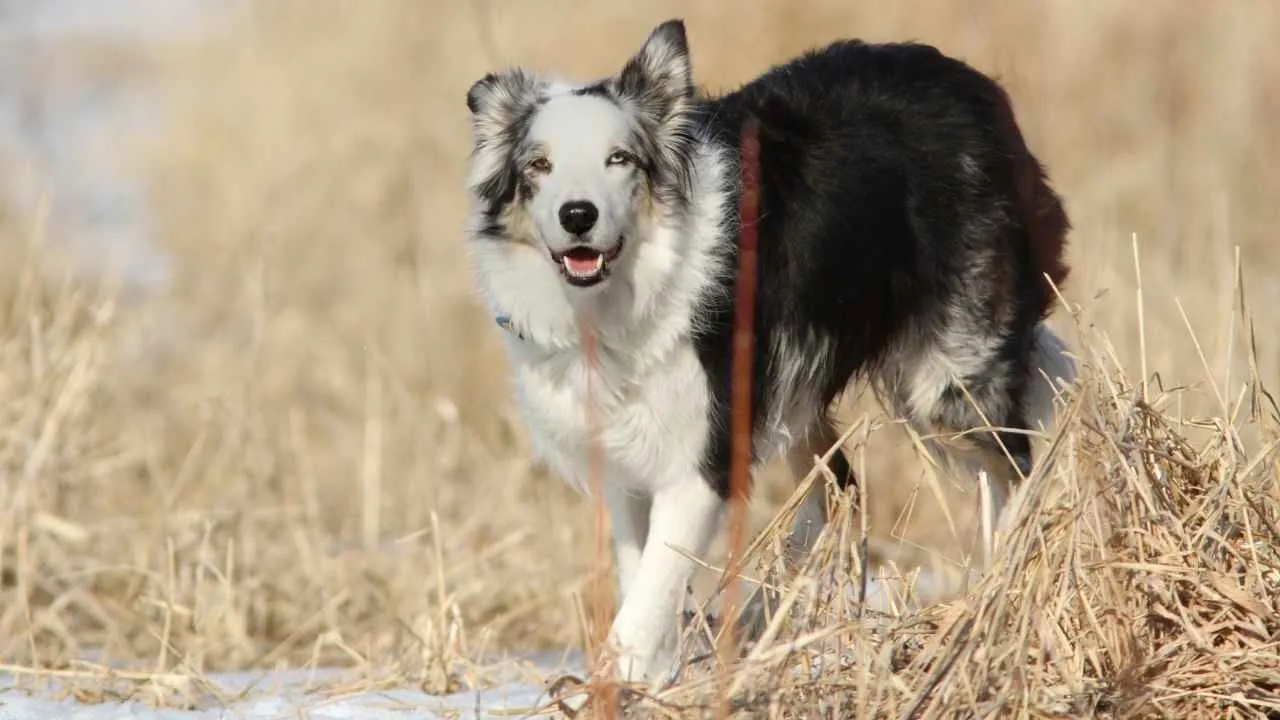
Australian Shepherds are a top pick for active owners looking for a great running partner. These medium-sized herding dogs were originally bred to move livestock over long distances, so they’re more than ready to keep up with a training schedule that includes everything from distance running to mid-range jogs.
Why Australian Shepherds Make Excellent Running Dogs
They thrive on vigorous exercise and are at their best when they get at least two hours of it every single day.
As herding breeds, Australian Shepherds may instinctively circle or guard their human while running.
You’ll find them excelling in agility sports, therapy work, and even search and rescue. With proper training, they can adapt to different tasks and lifestyles with ease.
Unique Traits of the Australian Shepherd
Loyal to the Core: Aussies are deeply bonded to their people. While their loyalty is admirable, it can also make them slightly overprotective. They do best with leash training and clear social cues to distinguish running from guarding.
Highly Adaptable: Though packed with energy, this high-energy dog can adjust to different home environments, as long as their exercise needs are met.
3. Border Collie
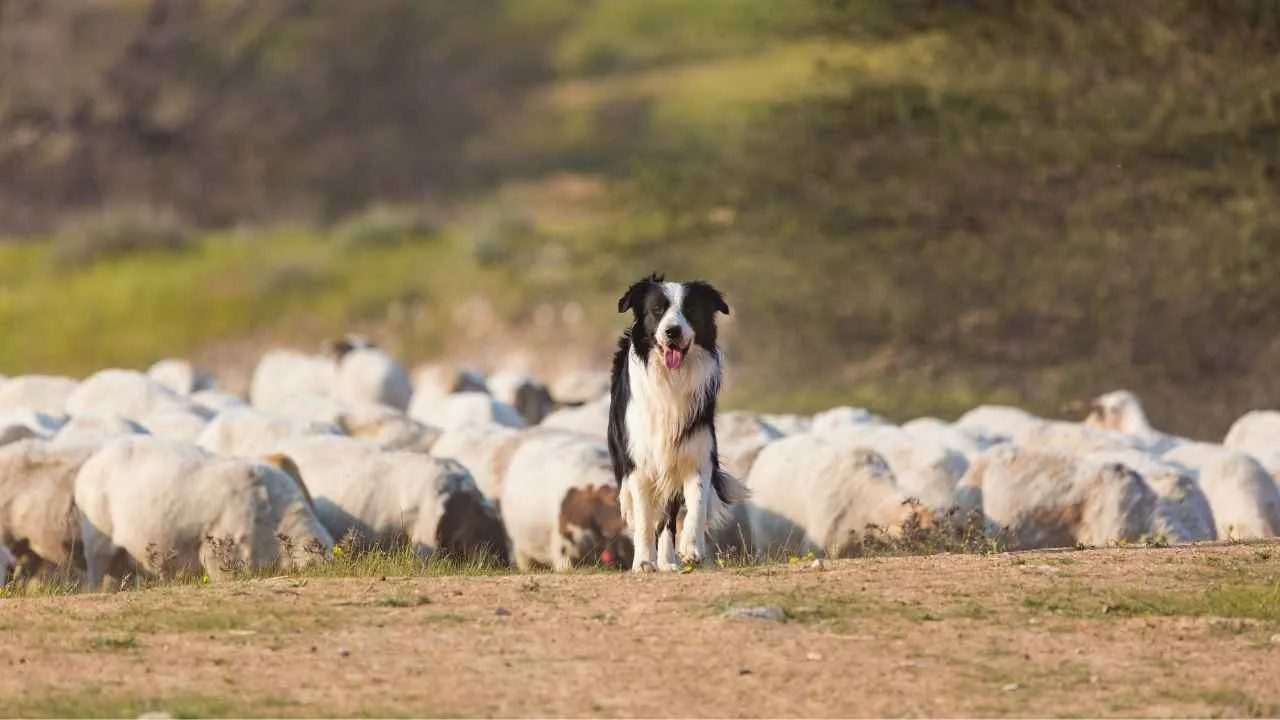
Border Collies are the definition of an athletic breed. Bred for work and wired for movement, these herding dogs aren’t just fast—they’re focused. Running with a Border Collie isn’t just exercise; it’s a shared mission. These natural runners will treat your long-distance running sessions as serious business.
Why Border Collies Are Great Running Dogs
These running dogs thrive when they have a purpose, and being your running buddy gives them exactly that.
Due to their dual-layered coats, they’re well-suited to cold weather. That said, deep snow can get caught in their fur, especially with rough coats, so it’s best to avoid snowy terrain for extended runs.
Border Collies are an energetic breed that benefits from consistent physical exercise. Without it, they’ll invent their own tasks—often destructive ones.
Unique Traits of the Border Collie
The Smartest Dog in the World: One Border Collie, Chaser, famously learned the names of over 1,000 objects. That kind of intelligence means they respond incredibly well to proper training and pick up commands faster than most dogs.

Vocal and Loyal: Border Collies are known to use an entire range of barks, yips, and howls to communicate with their humans. They’re not just smart—they’re emotionally connected and often regarded as one of the most loyal dog breeds.
Coat Types & Grooming: Border Collies come in rough and smooth coat variations, both of which require regular grooming to stay healthy, especially if they’re running in nature or across dirt trails.
4. Weimaraner
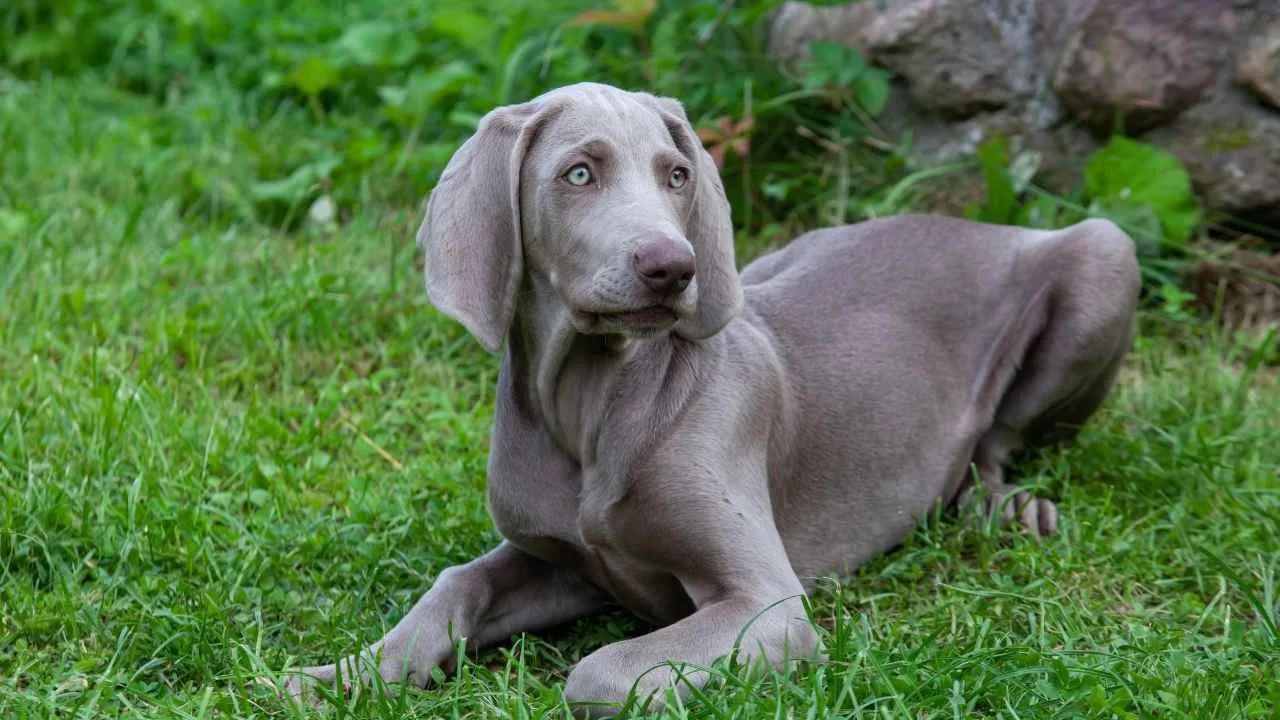
Few dog breeds are built for speed and stamina like the Weimaraner. With their lean frame, long legs, and boundless drive, these running companions are a dream for anyone serious about distance running.
They’re one of the best dog breeds for runners who want a fast-paced, energetic partner that stays glued to their side—literally.
Why Weimaraners Make Great Running Dogs
Their natural athletic build makes them great dogs for long distances, half marathons, or even just extended mid-distance running sessions.
Like true velcro dogs, Weimaraners hate being left out. According to PDSA, they thrive with active owners who can give them consistent time, attention, and movement.
Their deep bond with their human makes them ideal off-leash candidates during a trail run or in open areas, but only once leash training and recall are rock solid.
Unique Traits of the Weimaraner
Born with Stripes: Weimaraner puppies are born with light stripes that fade quickly—a rare and fascinating trait.
Webbed Feet: These aren’t just running dogs—they’re swimmers too. Their webbed feet make them natural in the water, especially helpful for those originally used in hunting dogs to retrieve waterfowl.
Celebrity Status: A favorite of icons like Grace Kelly and President Eisenhower, Weimaraners have long held a spot as stylish and athletic family dogs.
The “Off Switch”: Weimaraners also love to chill. After a good run, they’re all about couch time and cuddles.
5. Rhodesian Ridgeback
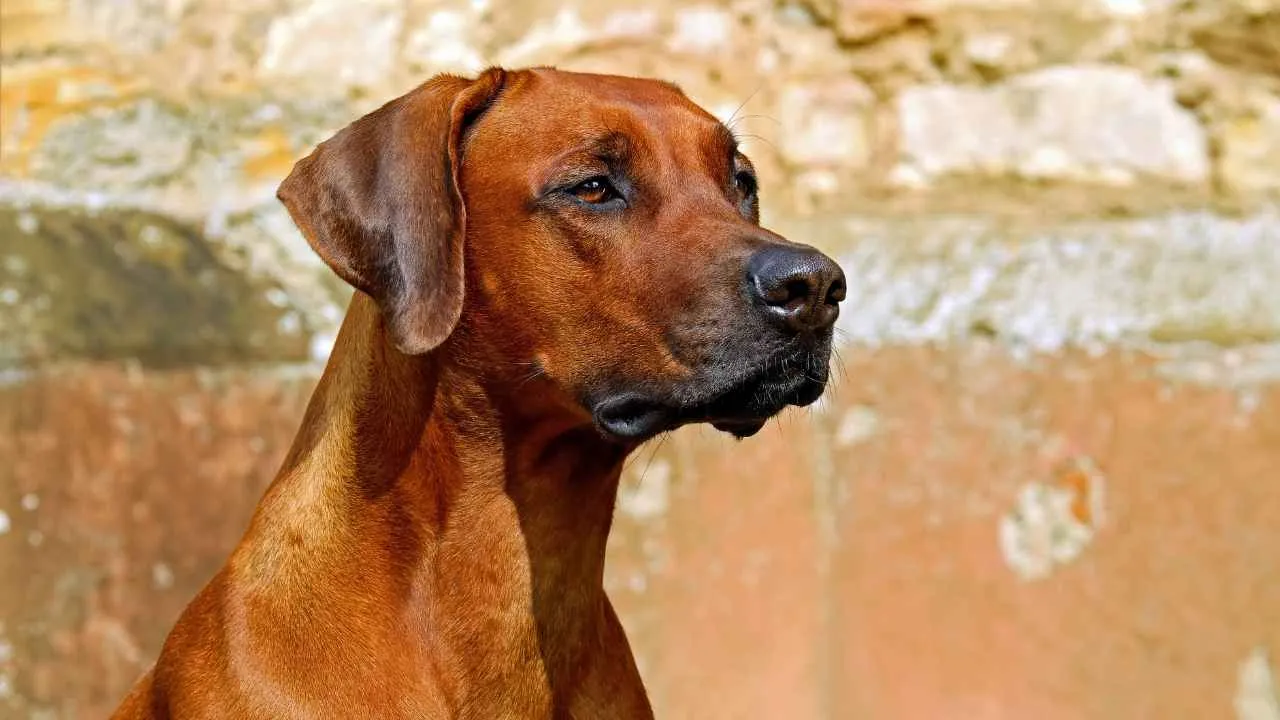
Originally bred in southern Africa to track lions, the Rhodesian Ridgeback is naturally built for endurance and stamina. Their athletic frame, combined with a high heat tolerance, makes them one of the top dog breeds for long-distance running.
While independent by nature, they thrive under consistent training and do best with active owners who can provide regular physical challenges.
Why Rhodesian Ridgebacks Make Great Running Dogs
Their lean muscle, low body fat, and short coat make them ideal for warm-weather runs and trail running under the sun.
They’re quiet, confident, and alert—not prone to barking unless there’s a reason. That calm vigilance makes them excellent running buddies on trails, where they’ll quietly keep watch and step in if they sense danger.
According to Orvis, Ridgebacks can easily keep up with a running horse and often clock 8-mile hikes without tiring.
Unique Traits of the Rhodesian Ridgeback
Lion Hunter to Family Guardian: Originally bred for lion hunting, Ridgebacks were also trusted to protect farms and families. That background fuels their calm confidence and fearless nature.
Stubborn but Trainable: They can be a bit strong-willed, so consistent, positive training is key. Once bonded, they’re loyal and tuned in.
Quiet & Focused: They’re not yappy or noisy—just quietly attentive and ready to respond when needed.
Symmetrical Appearance: With a snout as long as their skull, Ridgebacks have a striking, balanced face and, of course, the distinctive ridge of backward-growing hair along their spine that gives them their name.
6. Jack Russell Terrier
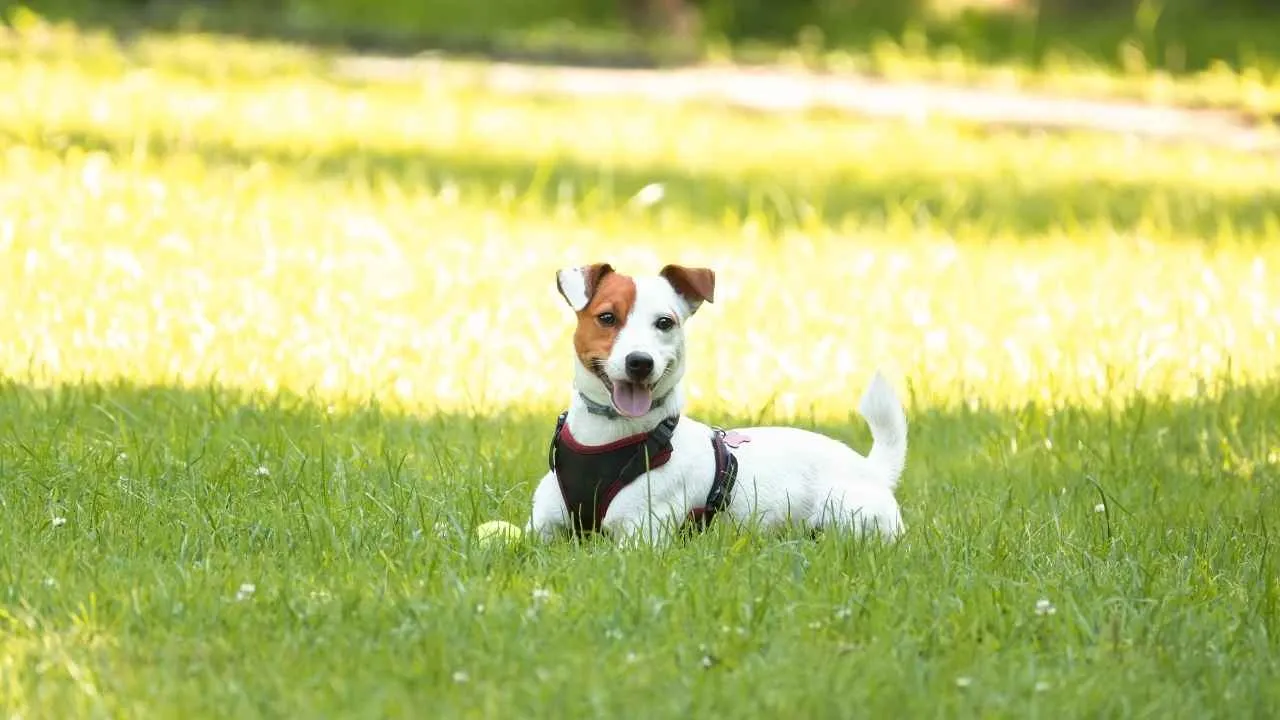
Originally bred for fox hunting in England, these dogs were designed to move fast, think quickly, and stay focused. That same drive translates well to short-distance runs, interval training, and trail routes where agility matters more than endurance.
Why Jack Russell Terriers Make Great Running Dogs
Their compact size and strong, athletic frame allow them to easily sprint and navigate tricky terrain.
If your running routine includes hills, obstacles, or quick directional changes, a Jack Russell will not only keep up—they’ll probably outpace you.
They’re best suited for runners who prefer shorter but more intense runs or hikes.
Just remember that a bored Jack Russell is a destructive Jack Russell. They’re happiest when they’ve got a purpose, and running with their human gives them just that.
Unique Traits of the Jack Russell Terrier
Three Coat Types: They come in smooth, broken, and rough coat varieties, all requiring different grooming needs but equally built for action.
High Jumping Ability: These little powerhouses can jump up to five times their height, great for agility courses and trail runs.
Vocal Communicator: Jack Russells are naturally expressive and often use barking to alert, engage, or get attention.
Media Stars: With appearances in movies and TV shows, Jack Russells are known for their intelligence, charm, and trainability on and off screen.
7. Labrador Retriever
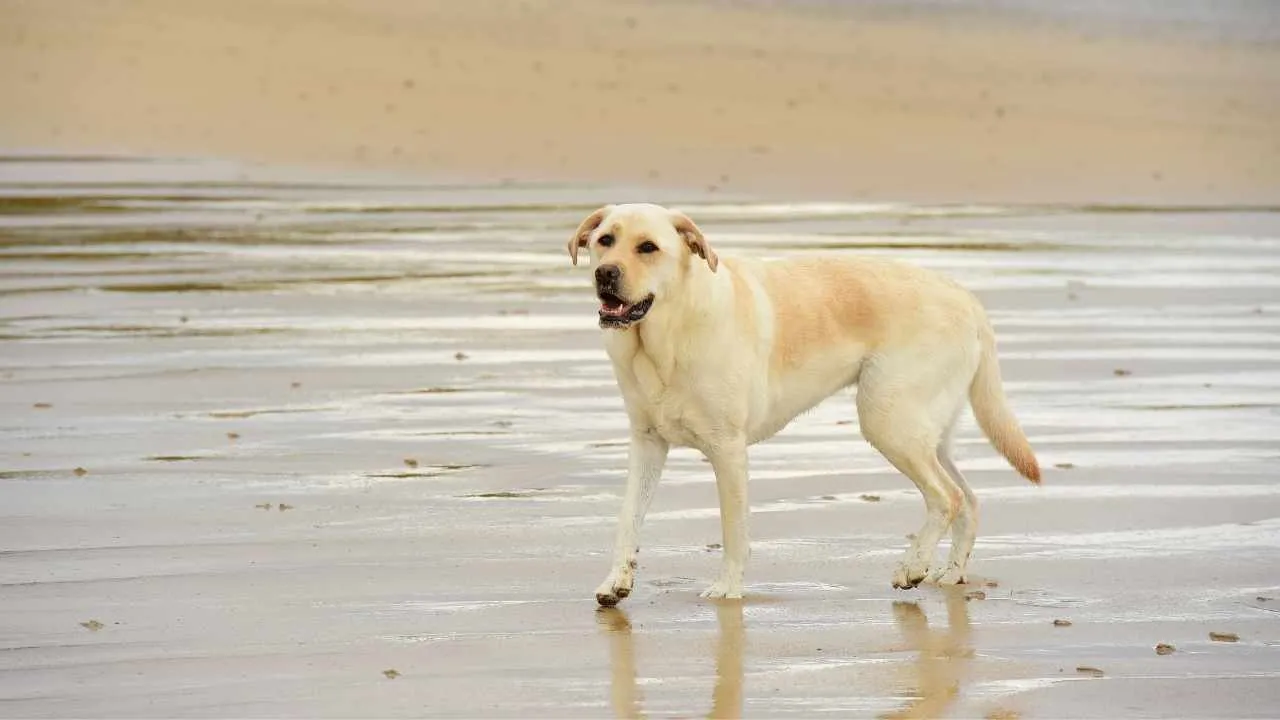
Labradors also thrive on routine and companionship. They’ll match your energy, adapt to your pace, and are less likely to stray or lose focus once trained. Whether you’re heading out for a run in the park or along a hiking trail, a Lab is usually right at your side, tail wagging and ready to go.
Why Labrador Retrievers Make Great Running Dogs
The Labrador Retriever is a natural athlete with a balanced, muscular build and an enthusiastic attitude toward physical activity.
Known for their stamina and eagerness to please, Labs make dependable partners for long-distance runs, outdoor adventures, or even fast-paced jogs around the neighborhood.
Their calm demeanor and willingness to follow commands make leash training easier, especially for beginners.
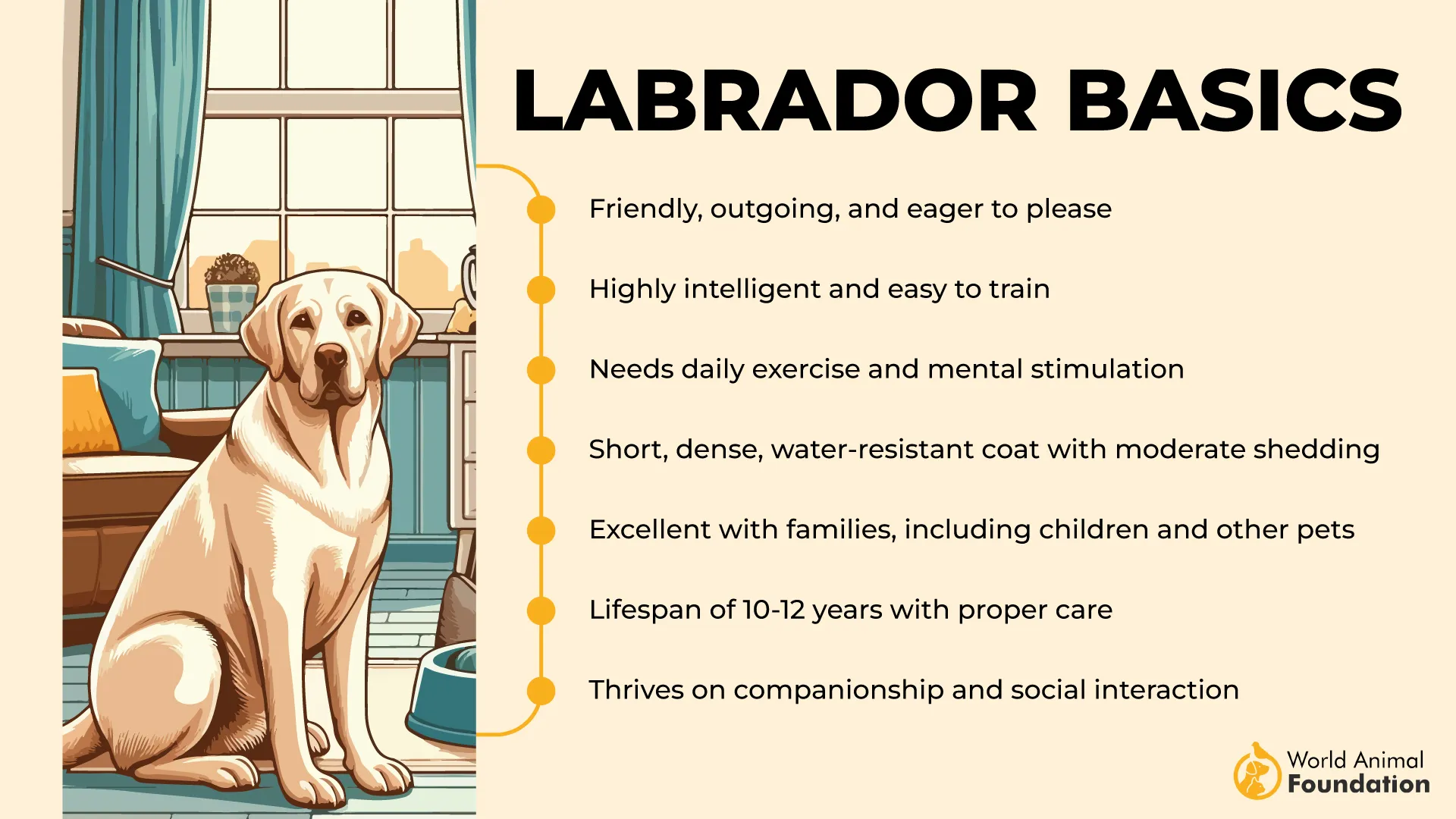
Unique Traits of the Labrador Retriever
Water-Loving Athletes: With webbed feet, a thick waterproof coat, and a strong rudder-like tail, Labs are built for swimming and retrieving in water.
Soft Mouth: Labradors can carry delicate items without damaging them—an instinctive trait from their days as hunting companions.
Highly Intelligent: Known for their quick learning and problem-solving skills, Labs are a top choice for guide dogs, service animals, and therapy work.
Silver Coat Variant: Some Labs carry a dilution gene that results in a rare silver coat. While visually striking, this variation is a topic of debate among breed purists.
Conclusion
Running long distances with a dog isn’t just about endurance—it’s about connection, trust, and mutual motivation. The best canine running partners aren’t necessarily the fastest or the strongest, but the ones who match your energy, respect your pace, and are as excited for the journey as you are.
What matters most is finding a dog whose temperament fits your rhythm. One that thrives on structure, enjoys the outdoors, and sees every run not just as exercise, but as a shared adventure. With the right training and care, a well-matched dog can become your most loyal and enthusiastic running partner, always ready for the next mile, no questions asked.


